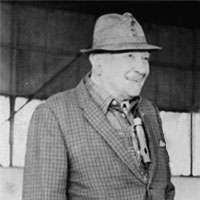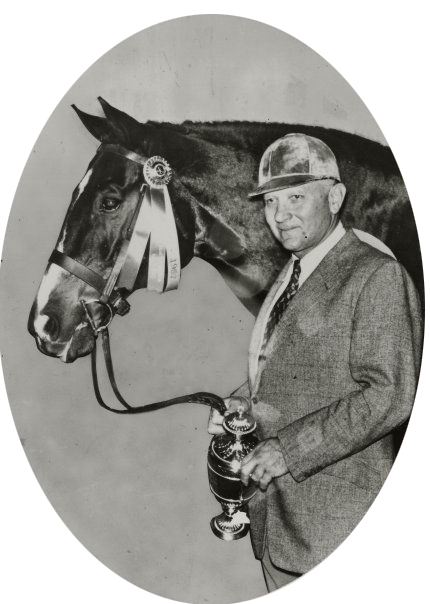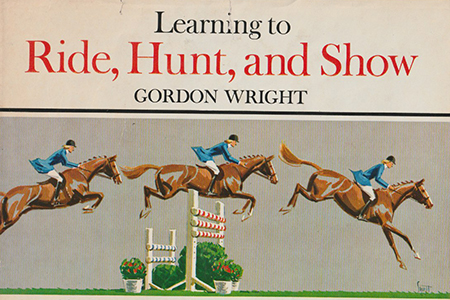Who's Who

Wright, Gordon
Discipline : Horseman
Born : 1903
Died : 1990
Gordon Wright, who grew up on a ranch in Utah, once recalled that he got his equestrian start riding anything he could get a leg over, including goats, calves and bulls. An early specialty was riding two horses at a time, standing up, Roman style, which got him work with rodeos and carnivals until he joined the cavalry in the early 1920’s.
While on a leave from the Army, he came to New York with Fred Bebee’s World Series Rodeo in 1927 and won $600, just enough, he later pointed out, to finance the purchase of a $500 riding stable in Bronxville, N.Y., and to buy his way out of the Army for $100.
After the outbreak of World War II, Mr. Wright returned to the cavalry and served as an enlisted man at Fort Riley, Kan., until the post commandant got a letter from one of his old polo-playing pals, Gen. George Patton. ”Next time I hear from you,” Patton wrote, ”Wright better be an officer.”
Mr. Wright became a second lieutenant almost overnight and was soon representing the United States in international riding competitions, the last cavalry officer to do so. He also trained a number of United States Olympic competitors.
Gordon Wright’s training barn, Secor Farms influenced a whole nation of jumping riders. He remained there for some four decades, running innumerable club and recognised shows, training hundreds of horses and riders of all ages and degrees of skill, and earning recognition for his own riding skill on jumpers and hunters as well. Wright produced more Maclay winners than any other trainer of his era, his pupils including Archie and Hugh Dean, Bill Steinkraus, Victor Hugo-Vidal and George Morris. However, it was perhaps as a clinician that he had the greatest influence. Wright’s influence as a teacher was also spread through his writings—he penned or edited seven books, including a “civilian” revision of the U.S. Cavalry School Manual. His book, Learning to Ride, Hunt, and Show was first published in 1950. By his death at the age of 87 in 1990 he was universally acclaimed as one of the most influential horseman of his generation.
 When Gordon Wright died in January 1989, the New York Times recorded his passing:
When Gordon Wright died in January 1989, the New York Times recorded his passing:
Gordon Wright, a noted horseman and riding instructor who helped establish the United States Equestrian Team after World War II, died Jan. 5 at a nursing home in Tryon, N.C. He was 85 years old and had lived at Wright Way Farm outside nearby Landrum, S.C.
Mr. Wright, who grew up on a ranch in Utah, once recalled that he got his equestrian start riding anything he could get a leg over, including goats, calves and bulls. An early specialty was riding two horses at a time, standing up, Roman style, which got him work with rodeos and carnivals until he joined the cavalry in the early 1920’s.
While on a leave from the Army, he came to New York with Fred Bebee’s World Series Rodeo in 1927 and won $600, just enough, he later pointed out, to finance the purchase of a $500 riding stable in Bronxville, N.Y., and to buy his way out of the Army for $100.
After the outbreak of World War II, Mr. Wright returned to the cavalry and served as an enlisted man at Fort Riley, Kan., until the post commandant got a letter from one of his old polo-playing pals, Gen. George Patton. ‘’Next time I hear from you,’’ Patton wrote, ‘’Wright better be an officer.’’
Mr. Wright became a second lieutenant almost overnight and was soon representing the United States in international riding competitions, the last cavalry officer to do so. He also trained a number of United States Olympic competitors.

